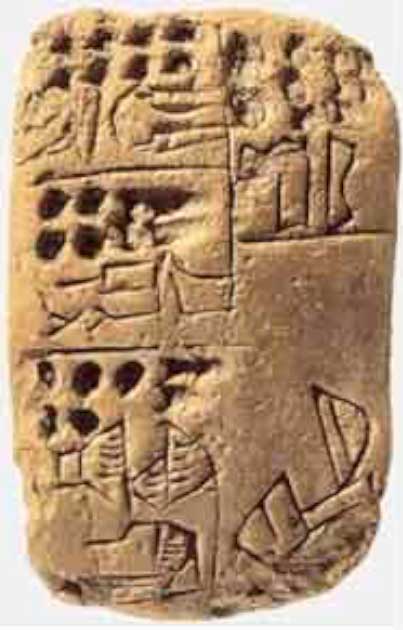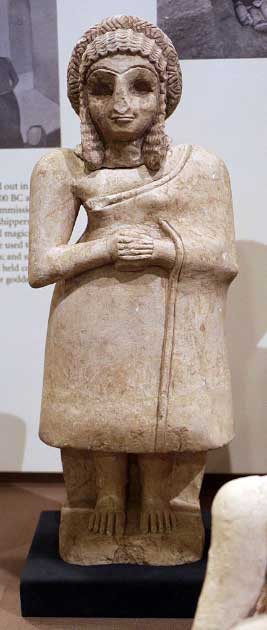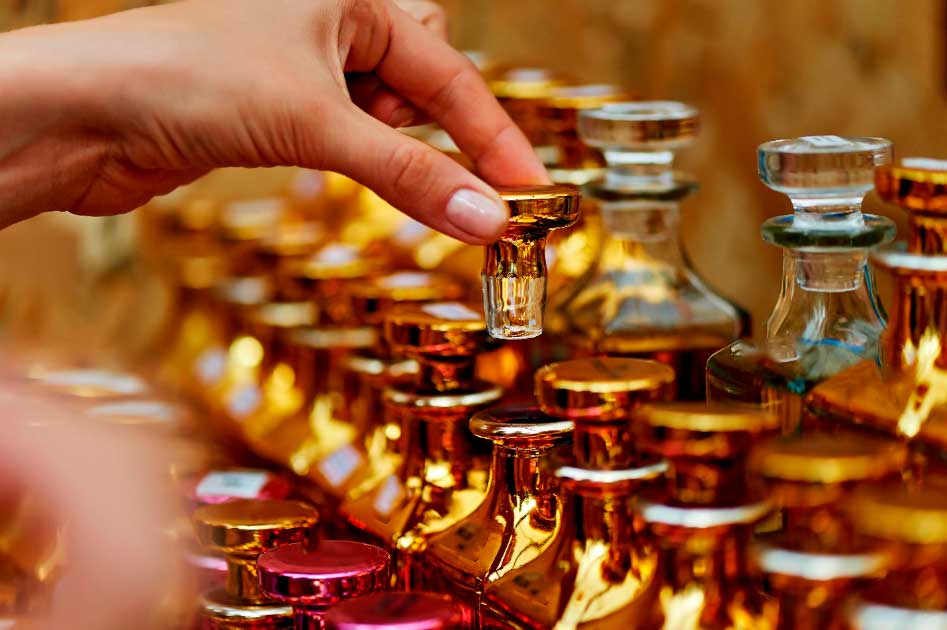3,200-Year-Old Mesopotamian Perfume Recreated from Ancient Text
A woman named Tapputi carried the distinction of being the first female chemist in Mesopotamia and the first female perfume maker anywhere in the world, approximately 3,200 years ago. Working with a Mesopotamian perfume formula left on an ancient clay tablet that Tapputi herself made, a team of perfume specialists and specialists from other fields has now recreated one of her Mesopotamian scents in a laboratory setting.
Turkish scientists working in cooperation with Turkey’s Smell Academy and Scent Culture Association (Koku Akademisi ve Koku Kültürü Derneği) carried out an extensive investigation of Tapputi’s Mesopotamian perfume-making methodologies. Their aim was to first understand what she did, and then possibly duplicate her work in as much detail as possible. They have now partially achieved their goals, although the efforts to translate and interpret the legendary Tapputi’s work will continue.

Representative administrative tablet from 1200-BC clay tablet in ancient Akkadian. (Public domain)
Tapputi’s Mesopotamian Perfumes Etched in Ancient Clay
Archaeologists found Tapputi’s name inscribed on a cuneiform tablet recovered during excavations in Assur Iraq, which was part ofBabylonian Mesopotamia in the second millennium BC. The tablets gave her full name as Tapputi-Belatekallim, with Belatekallim meaning “a female overseer of a house.” The tablets were dated to 1200 BC, and in their inscriptions Tapputi was described as a producer of fine Mesopotamian perfumes.
On the tablets, Tapputi recorded her Mesopotamian perfume formulas and the steps she used to produce her scents. Fortunately, scholars know enough about this language that it was possible to translate what she had written.
- Deciphering Cuneiform to Get a Handle on Life in Ancient Mesopotamia
- Sumerian Tablets: A Deeper Understanding of the Oldest Known Written Language
To make herancient perfumes, the recovered tablets revealed Tapputi used a combination of different types of flowers, oil, calamus, Cyperus, myrrh, horseradish, spices, and balsam, to name just a few of the ingredients identified. She would mix her various concoctions with water or other solvents, distill them, and then filter her liquid product many times to create a purer and more pleasant-smelling Mesopotamian perfume formula.
Out of this complex jumble ofMesopotamian information, they were able to eventually recreate one of her scent formulas in its entirety.
“In these tablets we were able to find answers to questions such as how she produced the scent and how she made the distillation process,” explained world-renowned ancient fragrance expert and Smell Academy and Scent Culture Association leader Bihter Türkan Ergül in an interview with theHurriyet Daily News. “Each cuneiform on the tablet gave us a different excitement and we made a travel in time when we were able to smell this scent [in the laboratory].”
As a part of her methodology, Ergül reveals, Tapputi would work under a full moon while seeking communion with the stars in the night sky. This esoteric aspect to her Mesopotamianperfume-making activities was one of many secrets uncovered during translations of the tablet that discussed Tapputi’s innovative modus operandi.
“As the Fragrance Culture Association, we are keeping alive the scent traditions that have existed on these lands,” Ergül stated. We live on a land that has an 8,000-year-old scent culture.” The fragrance expert noted that there were hundreds oftablets that touch on fragrance production in ancient Mesopotamia unearthed during the excavations, and much work remains to translate them all.
Ergül and her team of experts produced 27 pages of translation from the tablets relating to perfume.
“The main reason why Mesopotamia is rich in scent culture is its fertile soils,” she explained. “When we look at civilizations such as Assyria, Mesopotamia, Hittite, Seljuk and Ottoman, we see that Turkey is a fragrance civilization. We have been working on this project for about three years, researching the scent culture in Mesopotamia. In this process, we reached Tapputi, she is known as the world’s first perfumer.”

Stastue of a Mesopotamian woman from around the time of Tapputi. (Sailko /CC BY 3.0)
Uncovering the Brilliance of the World’s First Known Female Perfume Maker
In addition to Ergül, there were 15 experts involved in this new study of Tapputi and her innovative work. These included Professor Mehmet Önal, an archaeologist from Harran University who led the excavations at Harran, and Associate Professor Cenker Atila, an archaeologist from Sivas Cumhuriyet University and an expert on ancient ceramics, glass works, and perfumes. The research was carried out on artifacts that were previously recovered and have only now been translated after three years of strenuous and dedicated effort.
- Experts discover plant which is the mother of ancient Roman perfumes
- Cleopatra’s Perfume Recreated – A Scent That Once Masked The Odor Of Sour Donkey Milk!
While they discovered enough to identify all the ingredients used in one of Tapputi’s scents, proceeding beyond this point could be a challenge. Atila highlights two problems his team has faced as they’ve attempted to learn more about Tapputi and her work.
“One of them is that the tablets were broken and some important parts were lost,” he said. “The second difficulty is that some plants and containers used 3200 years ago do not have the exact equivalent. For example, we do not know exactly what the “hirsu” vessel is. However, since it is used in the perfume distillation process, it should be a container like a flowerpot. In addition, the fact that we do not know the current names of some spices and flowers used in perfume production appears an important problem.”
Moving beyond the decoding of formulas and methodologies to the actual recreation of scents in a lab represents a big step. It has been done once so far, and the researchers hope they will be able to resurrect even more scents in the years to come, which will provide direct evidence of Tapputi’s true brilliance as the world’s first recorded female perfume-maker.
Top image: Recently, a team of Turkish scientists have recreated a 1200-BC Mesopotamian perfume made by the "world's first female chemist" Tapputi. These glass bottles are full of “modern” perfumes that all benefited from the first scent pioneers of the ancient world. Source:gal2007 / Adobe Stock
By Nathan Falde


















Comments
How good to have an expert who is studying the subject of this article comment! I have looked into your comments, and have tried to remove all the pieces of information that you have pointed out as misleading until we are able to verify the article further. The article did rely on the validity of a single first source, which is not our usual protocol. Thank you, your comment has really helped us to improve the reporting of this subject, and remove any possible misinformation.
Gary
Every piece of information in this article is incorrect.
Her name was not Tapputi it was Tapputibeletekallim; that is her whole name, not a title. She was only called a perfumer in the tablet; it was not a prestigious title, she was a kitchen worker.
She was not Akkadian; she was Assyrian.
Her tablet is not written in Akkadian it is written is Middle Assyrian. It was not excavated and recently translated in Turkey. Tapputibeletekallim’s tablet was excavated in 1903 by the Deutsche Orient-Gesellschaft excavations in Iraq. It was found in the ruins of Assur, not Harran. The tablet was translated in 1919 by the Assyriologist Erich Ebeling. it is a short formula, it does not need 27 pages to translate.
THERE IS ONLY ONE TABLET!
The tablet that you are showing is AO29560 located in the Louvre in Paris. However, it is a receipt for food rations distributed to four families in the city of Uruk in the late fourth millennium. It’s depicting the wrong city, the wrong era, and says nothing about perfume. It is also not written in cuneiform and it is flipped on its side; it should be longways.
Taputtibeletekallim’s sole tablet is KAR 220 and it is in the Vorderasiatisches Museum in Berlin.
The tablet is damaged so there is no way a full translation could be possible and almost half of the aromatics haven’t been identified. However, we know exactly what a hirsu vessel is.
The Girl’s Museum is not in Berlin, it isn’t a physical museum it is an educational website for children.
Koku Kültürü Derneği’s website appears to be an unedited cooking blog template, and Koku Akademisi isn’t an academic institution. It is a business that seems to mostly sell room sprays to hotels, both are run by Bihter Türkan Ergül. She is a self-taught perfumer with no archaeological qualifications I could find. She appears to have no connection to the current Harran excavations.
Professor Mehmet Önal is the excavation lead at Haran but he is from Harran University. There is another Professor Mehmet Önal at Ozyegin University but he studies business production and inventory planning. As she got that wrong, I doubt she has met either of these people.
Associate Professor Cenker Atila from Cumhuriyet University, is an expert on ancient ceramics, but I doubt that is a real quote, all things considered. All three can be contacted to verify, I suggest you do.
I will list sources for you to verify these claims below, but you should take this post down. This is egregious misinformation about the past and lying about the present to draw attention to someone’s business. I don’t look to Ancient Origins to be the bastion of journalistic integrity but even a crumb of scrutiny would have shown the original source was untrustworthy.
The Uruk Tablet (the wrong tablet)
AO 29560. Richelieu, [AO] Room 236 – Archaic Mesopotamia (from the Neolithic to the period of the archaic dynasties of Sumer), Vitrine 3 Birth of writing. Department of Oriental Antiquities. Louvre Museum
Link to the digital scan of tablet: https://collections.louvre.fr/en/ark:/53355/cl010153954
Tapputibeletekallim’s Tablet
KAR 220. VAT 10165, VAT 10445, VAT 12269 (frag). Excavation no: Ass 04347c. Vorderasiastisches Museum. Berlin, Germany.
Link to the digital scan of the tablet: https://cdli.ucla.edu/search/search_results.php?SearchMode=Text&ObjectID...
The Original Translation
Ebeling, E. Parfümrezepte und kultische Texte aus Assur, Sonderdruck aus Orientalia. Pontificium Institutum Biblicum, 1950.
Peer-Reviewed Secondary Sources
Pedersén, Olof Archives and libraries in the city of Assur: A Survey of the Material from the German Excavations, Part. I, Uppsala, Almqvist & Wiksell, 1985.
Joannès, Francis. La culture matérielle à Mari (v): les parfums. Pp. 251–270 in Mari. Annales de Recherches Interdisciplinaires 7. Paris: Editions Recherche sur les Civilisations. 1993.
Cousin, Laura. “Female Perfume-Makers in Neo-Assyrian and Neo-Babylonian Documents”. Second Workshop. Le Rôle Économique des Femmes en Mésopotamie Ancienne. Tokyo. June 2013. refema.hypotheses.org/806
Cousin, Laura. “Beauty Experts: Female perfume-makers in the 1st millennium B.C.”. The Role of Women in Work and Society in the Ancient Near East, edited by Brigitte Lion and Cécile Michel, Berlin, Boston: De Gruyter, 2016, pp. 512-525.
Raign, Kathryn R. “Finding Our Missing Pieces—Women Technical Writers in Ancient Mesopotamia.” Journal of Technical Writing and Communication, vol. 49, no. 3, July 2019, pp. 338–364.
Scent Culture Association’s website
https://kokukulturudernegi.com/
Scent Academy
http://kokuakademi.com/en/home/